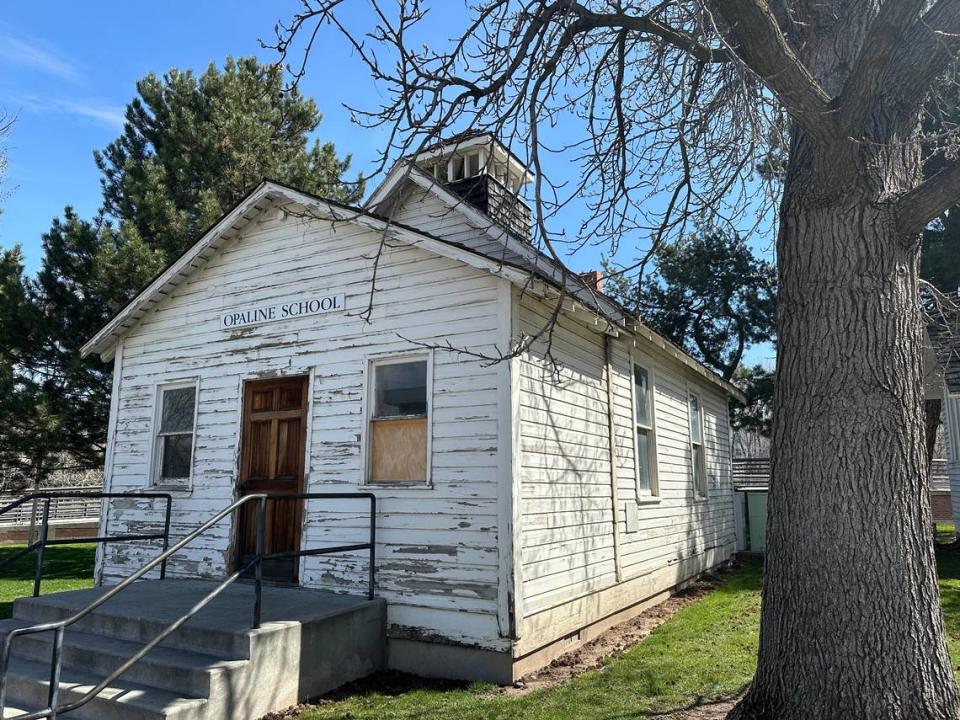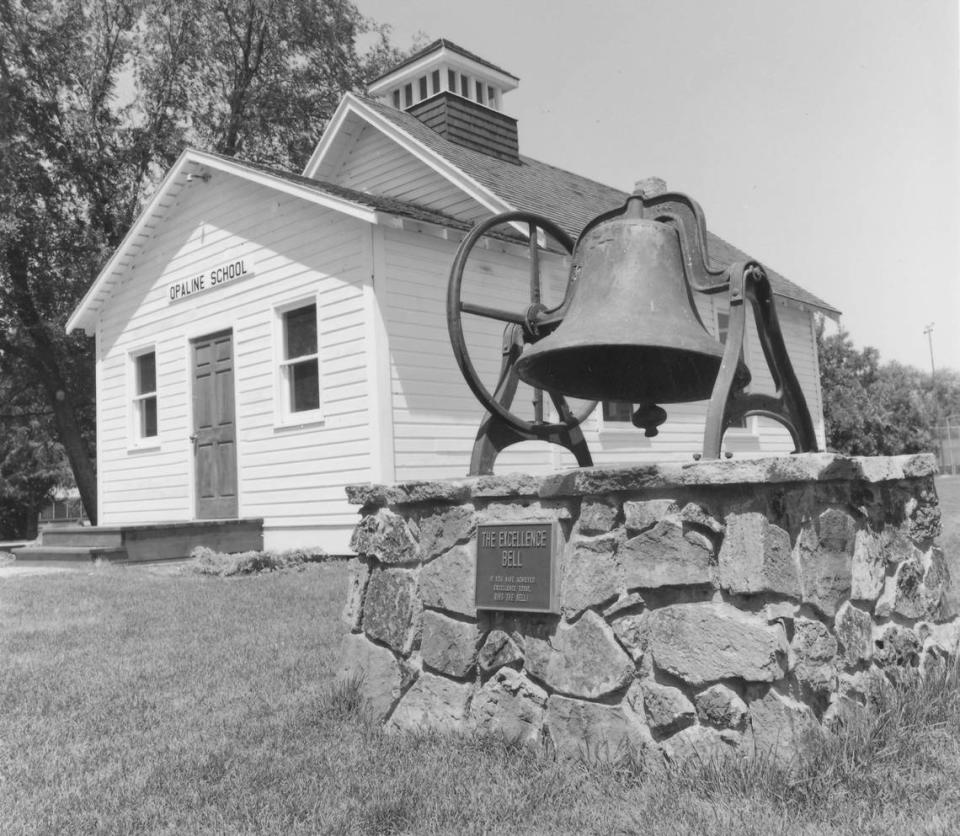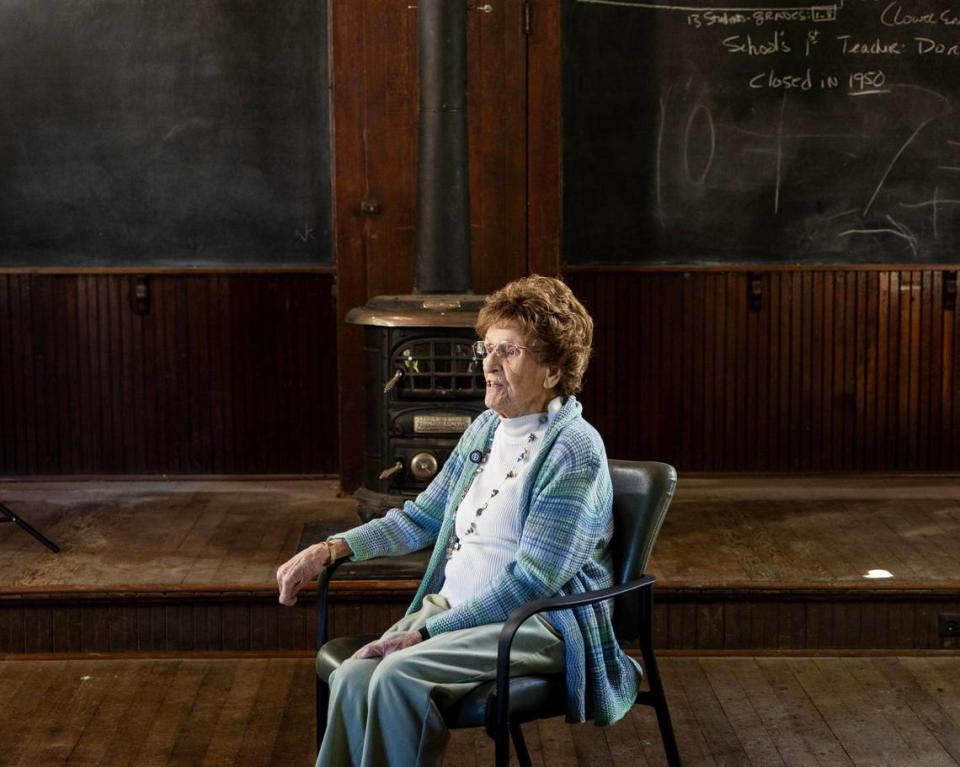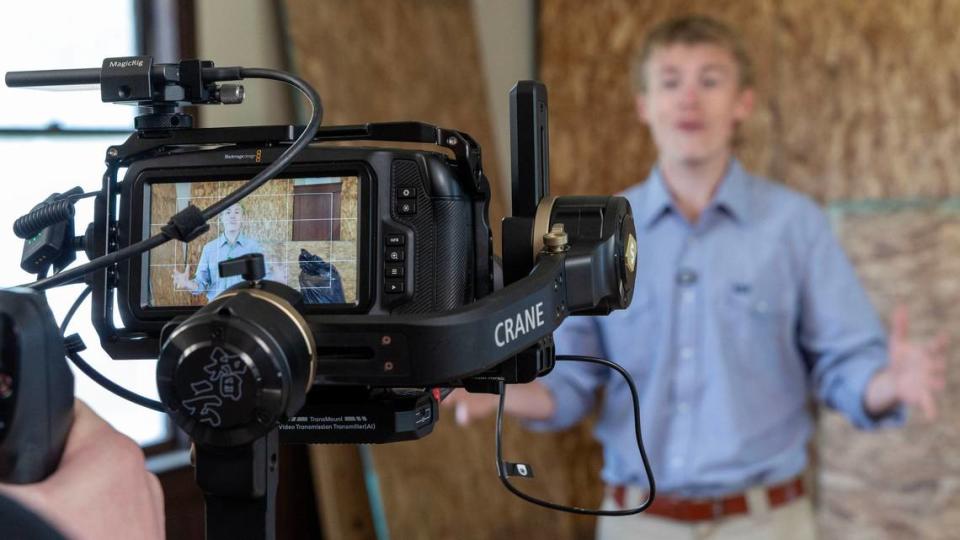Ever wonder what that old schoolhouse is next to Albertsons Stadium at Boise State?
Boise State University students who might someday want to work on a renovation show on HGTV are getting some real-world experience.
Media students are working on a project to repair the Opaline Schoolhouse, a historic one-room building that dates to 1914. At the same time, they’re recording their work for a “This Old House”-style show.
“I know other media programs that teach how to do the news or teach how to do sports broadcasting, but not how to do a home improvement show,” said Nathan Snyder, Boise State media lecturer and director of University Television Productions, who’s leading the students on the project. “I don’t know where you go to get that, so I feel really happy that I get to walk them through the process of creating something that might end up on Home and Garden Television or how you recreate something like ‘This Old House.’”

If you’re a Boise State football fan, you might know the little old schoolhouse well. It sits unobtrusively on a sliver of grass on the northeast edge of the Albertsons Stadium parking lot along Broadway Avenue.
Or maybe you have not noticed.
It’s easy to miss.
The Opaline Schoolhouse, built in 1914 west of Givens Springs, near Marsing in Owyhee County, sits tucked behind Christ Chapel, perhaps the more historically significant building, which dates to 1866.
Snyder said his class was working on another video project a couple of years ago at Christ Chapel when noticing the little schoolhouse sitting next to it.
The schoolhouse needed work, but there was no money in anybody’s budget for that.
Fast-forward a couple of years, and the university’s department of facilities operations and maintenance found $20,000 in its budget to do the work, consisting of disaster cleanup, lead and asbestos testing, a new roof, new pieces of siding, window repairs and new paint.
Snyder stressed that the work they’re doing now is just stabilization to prevent further damage and to salvage the building for a full restoration in the future.
Each Friday afternoon, anywhere from five to a dozen students have been documenting the progress for what will later become a documentary on the project and the schoolhouse.
“My big goal is to restore a piece of Idaho history (and) to teach my students how to create video content around this enterprise,” Snyder said.

Schoolhouse history
The schoolhouse opened with 13 students in seventh and eighth grades, according to the Boise State Special Collections and Archives.
Snyder said one-room schoolhouses like Opaline dot the Idaho landscape and are a huge part of the Western imagination, reminiscent of “Little House on the Prairie.”
The Opaline schoolhouse eventually closed in the 1950s, and the Opaline Water Board assumed ownership and used it for storage and meetings, according to the archives.
So how did a 110-year-old building from Owyhee County end up on a patch of grass on the edge of Boise State’s campus?
According to the Boise State archives, in the mid-1980s, then-Boise State President John Keiser had a project in mind to mark the 50-year anniversary of the college. He wanted a one-room schoolhouse with a bell to remind students and the community of the history of education of Boise State.
The Opaline Water Board in 1983 donated the Opaline Schoolhouse, and the university took ownership on Jan. 9, 1984.
Boise State moved it to school grounds, where the Appleton Tennis Center now sits. The university renovated the schoolhouse and relied on donations to fill it with authentic furniture, such as desks, and papers from Opaline students.
Renovations were completed in December 1984, but one thing was still missing: a bell, which the Opaline Schoolhouse did not have.
The Nampa School District stepped up and donated the “Excellence Bell” from the Greenhurst School, a two-room schoolhouse in the Greenhurst neighborhood near Nampa, according to the Boise State archives.
A dedication ceremony was held on March 7, 1985, and the Opaline Schoolhouse opened to the public as a historic educational museum.
When the Appleton Tennis Center opened in 2002, the Opaline Schoolhouse and the Excellence Bell were moved to its current location beside what was then called Bronco Stadium.
In 2017, Boise State donated the bell to the Boise School District, where it was installed at Hawthorne Elementary and still sits today.

Opaline schoolteacher
Snyder and his crew were able to locate Dorothy Vauk, 104, who taught at the school in the 1940s.
Students interviewed her last month inside the schoolhouse, and she’ll be part of the documentary.
Colin McJunkin is a communications and media major graduating at the end of the year. He’s working on the Opaline project as videographer and editor.
“Personally, I love doing video film content like this,” McJunkin told me in an interview. “I also think if it turns out as great as we hope it’s going to be, I think it’d be a really good portfolio piece, as well, and good experience.”

Students are using top-end gear, some of the best equipment in the industry right now that a lot of professionals are using, including camera gimbals, wireless mics and even a motion picture crane that they used for one of the shoots.
“We got to set up a crane shot, and that was an amazing experience that I don’t think a lot of U.S. university students get to have the opportunity to do,” McJunkin said. “And that was one of those eye-opening moments of, ‘Wow, this is how they really got the shots,’ especially before drones were really incorporated in the industry to get those aerial shots.”
The Boise State media program is a pre-professional program, meaning students are trained to take jobs right out of school, according to Snyder.
McJunkin loves movies and would like to work in the film industry, primarily on the production side. The experience McJunkin has been getting at Boise State has been valuable toward that end, but the Opaline project has been particularly so.
“I really do like (documentary) work like this,” McJunkin said. “I think it’s one of those things where, as a university student, you’re always told you need more experience, and I think a project like this does exactly that for us. It is providing that hands-on experience. … You’re putting a lot more time and effort into the pre-production, production and post-production than I would think most students would be able to put into a project over a couple of months.”

Media students work on other projects, such as broadcasting club sports, e-sports, lectures and forums, but the Opaline project stands out.
“Opaline is one of those projects where it truly is that docuseries style where you’re just trying to roll most of the time and get the content that is interesting and story that adds value to it,” McJunkin said. “This is a very, very fun and interesting one-off that we get to do.”
The team is working on a deadline and aiming to have the project finished by the first Boise State home football game in September.
They students will produce three videos from the project: a piece to promote the Opaline school as a game-day lawn venue space, a documentary about the restoration process and the history of the school, and a promotional video about the program and how students are learning to create this kind of documentary.
“It’s kind of just one of those things where we might lose a piece of history if we’re not careful,” Snyder said. “Not that it’s a super big, super important piece of history, but it is a piece of history, and in a state that’s as young as ours where we have so little historical things, it’s nice to hold on to what we have.”


